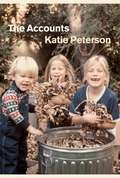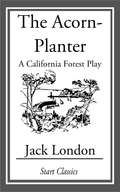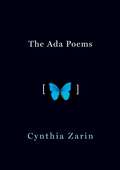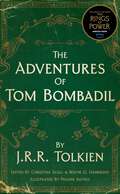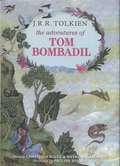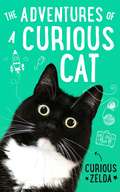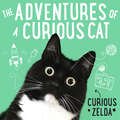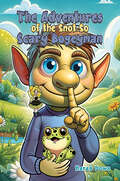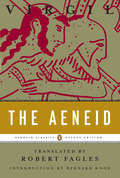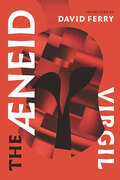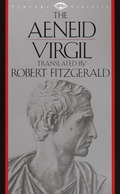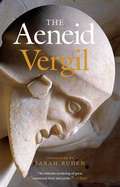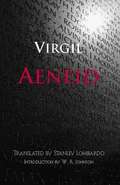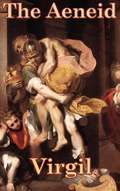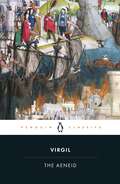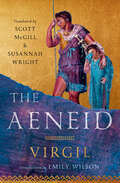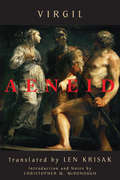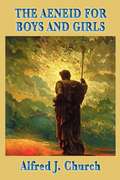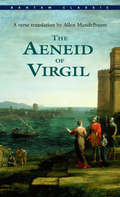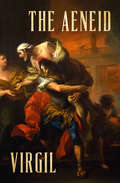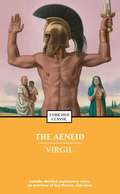- Table View
- List View
The Accounts
by Katie PetersonThe death of a mother alters forever a family's story of itself. Indeed, it taxes the ability of a family to tell that story at all. The Accounts narrates the struggle to speak with any clear understanding in the wake of that loss. The title poem attempts three explanations of the departure of a life from the earth--a physical account, a psychological account, and a spiritual account. It is embedded in a long narrative sequence that tries to state plainly the facts of the last days of the mother's life, in a room that formerly housed a television, next to a California backyard. The visual focus of that sequence, a robin's nest, poised above the family home, sings in a kind of lament, giving its own version of ways we can see the transformation of the dying into the dead. In other poems, called "Arguments," two voices exchange uncertain truths about subjects as high as heaven and as low as crime. Grief is a problem that cannot be solved by thinking, but that doesn't stop the mind, which relentlessly carries on, trying in vain to settle its accounts. The death of a well-loved person creates a debt that can never be repaid. It reminds the living of our own psychological debts to each other, and to the dead. In this sense, the death of this particular mother and the transformation of this particular family are evocative of a greater struggle against any changing reality, and the loss of all beautiful and passing forms of order.
The Accounts (Phoenix Poets Ser.)
by Katie PetersonThe death of a mother alters forever a family’s story of itself. Indeed, it taxes the ability of a family to tell that story at all. The Accounts narrates the struggle to speak with any clear understanding in the wake of that loss. The title poem attempts three explanations of the departure of a life from the earth—a physical account, a psychological account, and a spiritual account. It is embedded in a long narrative sequence that tries to state plainly the facts of the last days of the mother’s life, in a room that formerly housed a television, next to a California backyard. The visual focus of that sequence, a robin’s nest, poised above the family home, sings in a kind of lament, giving its own version of ways we can see the transformation of the dying into the dead. In other poems, called “Arguments,” two voices exchange uncertain truths about subjects as high as heaven and as low as crime. Grief is a problem that cannot be solved by thinking, but that doesn’t stop the mind, which relentlessly carries on, trying in vain to settle its accounts. The death of a well-loved person creates a debt that can never be repaid. It reminds the living of our own psychological debts to each other, and to the dead. In this sense, the death of this particular mother and the transformation of this particular family are evocative of a greater struggle against any changing reality, and the loss of all beautiful and passing forms of order.
The Acorn-Planter: A California Forest Play
by Jack LondonJack London was an American novelist, journalist, social-activist and short-story writer whose works deal romantically with elemental struggles for survival. At his peak, he was the highest paid and the most popular of all living writers. Because of early financial difficulties, he was largely self educated past grammar school. London drew heavily on his life experiences in his writing. He spent time in the Klondike during the Gold Rush and at various times was an oyster pirate, a seaman, a sealer, and a hobo. His first work was published in 1898. From there he went on to write such American classics as Call of the Wild, Sea Wolf, and White Fang.
The Ada Poems
by Cynthia ZarinA dazzling story of obsessive love emerges in Cynthia Zarin's luminous new book inspired and inhabited by the title character of Nabokov's novel Ada, or Ardor: A Family Chronicle, who was the lifelong love of her half brother, Van.These electric poems are set in a Nabokovian landscape of memory in which real places, people, and things--the exploration of the Hudson River, Edwardian London, sunflowers, Chekhov, Harlem, decks of cards, the death of Solzhenitsyn, morpho butterflies--collide with the speaker's own protean tale of desire and loss. With a string of brilliant contemporary sonnets as its spine, the book is a headlong display of mastery and sorrow: in the opening poem, "Birch," the poet writes "Abide with me, arrive / at its skinned branches, its arms pulled / from the sapling . . . the birch all elbows, taking us in." But Zarin does not "Destroy and forget" as Nabokov's witty, tender Ada would have her do; rather, as she writes in "Fugue: Pilgrim Valley," "The past's / clear colors make the future dim, Lethe's / swale lined with willow twigs." Like all enduring love poetry, these poems are a gorgeous refusal to forget.A riveting, high-stakes performance by one of our major poets, The Ada Poemsextends the reach of American poetry.From the Hardcover edition.
The Adventures Of Taxi Dog
by Sal Barracca Debra BarraccaA stray dog in New York City is adopted by a taxi driver, with whom he thereafter rides and shares adventures each day.
The Adventures of Tom Bombadil
by J. R. TolkienA revised and expanded edition of Tolkien’s own Hobbit-inspired poetry, including previously unpublished poems and notes, and beautiful illustrations by Narnia artist Pauline Baynes.One of the most intriguing characters in The Lord of the Rings, the amusing and enigmatic Tom Bombadil also appears in verses said to have been written by Hobbits and preserved in the “Red Book” with stories of Bilbo and Frodo Baggins and their friends. The Adventures of Tom Bombadil collects these and other poems, mainly concerned with legends and jests of the Shire at the end of the Third Age.This edition includes earlier versions of some of Tolkien’s poems, a fragment of a prose story with Tom Bombadil, comprehensive notes by acclaimed Tolkien scholars Christina Scull and Wayne G. Hammond, and stunning illustrations by Narnia artist Pauline Baynes.
The Adventures of Tom Bombadil): and Other Verses from the Red Book
by J.R.R. Tolkien'Here is something that no devotee of the Hobbit epic can afford to miss, while awaiting a further instalment of the history of these fascinating people.' So declared the jacket of this book when it was first published some fifty years ago. One of the most intriguing characters in The Lord of the Rings, the amusing and enigmatic Tom Bombadil, also appears in verses said to have been written by Hobbits and preserved in the 'Red Book' with stories of Bilbo and Frodo Baggins and their friends. The Adventures of Tom Bombadil collects these and other poems, mainly concerned with legends and jests of the Shire at the end of the Third Age. 'Professor Tolkien revealed in the verses scattered through The Hobbit that he had a talent for songs, riddling rhymes, and a kind of balladry. In The Adventures of Tom Bombadil the talent can be seen to be close to genius.' Listener This special edition has been expanded for the first time to include earlier versions of some of Tolkien's poems, a fragment of a prose story with Tom Bombadil, and comprehensive notes by acclaimed Tolkien scholars Christina Scull and Wayne G. Hammond. You'll find a large treasury of books by and about J. R. R. Tolkien in the bookshare library.
The Adventures of a Curious Cat: wit and wisdom from Curious Zelda, purrfect for cats and their humans
by Curious Zelda'A purrfect gift for a loved one with a special affinity for the feline' 'An absolute must for any cat lover''Curiosity is more than a desire to discover. It's a lifestyle, and a purrvilege. It's hours of observing a fly on the wall. It's entering the sock drawer just before it closes. It's sniffing the lampshade one more time . . .'Such is the wisdom of Curious Zelda: social media star, agony aunt, yoga teacher, cat. In The Adventures of a Curious Cat she gives insight into her view of the world and dispenses unparalleled wisdom. Zelda explains, in her unique voice, how to handle humans, how to communicate with furniture, and most importantly how to live a life curiously. It's the ultimate self-help guide for any cat, or indeed, their human.
The Adventures of a Curious Cat: wit and wisdom from Curious Zelda, purrfect for cats and their humans
by Curious Zelda'A purrfect gift for a loved one with a special affinity for the feline''An absolute must for any cat lover''Curiosity is more than a desire to discover. It's a lifestyle, and a purrvilege. It's hours of observing a fly on the wall. It's entering the sock drawer just before it closes. It's sniffing the lampshade one more time . . .'Such is the wisdom of Curious Zelda: social media star, agony aunt, yoga teacher, cat. In The Adventures of a Curious Catshe gives insight into her view of the world and dispenses unparalleled wisdom. Zelda explains, in her unique voice, how to handle humans, how to communicate with furniture, and most importantly how to live a life curiously. It's the ultimate self-help guide for any cat, or indeed, their human.
The Adventures of a Curious Cat: wit and wisdom from Curious Zelda, purrfect for cats and their humans
by Curious Zelda'Curiosity is more than a desire to discover. It's a lifestyle, and a purrvilege. It's hours of observing a fly on the wall. It's entering the sock drawer just before it closes. It's sniffing the lampshade one more time . . .'Such is the wisdom of Curious Zelda: social media star, agony aunt, yoga teacher, cat. In The Adventures of a Curious Cat she gives insight into her view of the world and dispenses unparalleled wisdom. Zelda explains, in her unique voice, how to handle humans, how to communicate with furniture, and most importantly how to live a life curiously. It's the ultimate self-help guide for any cat, or indeed, their human.
The Adventures of the Snot so Scary Bogeyman
by Karen DownA story of snot, bogeys and dog poo! A disgusting, rhyming story book, The Adventures of the Snot so Scary Bogeyman, sees a hungry young Bogeyman on a hilarious trip to find friends, but more importantly, to keep his bogey safe. Follow him through the ups and downs of his journey as he loses a tooth, then worse his bogey. After scaring the Tooth Fairy, who is new at her job, his little adventures put him in some rather funny yet yucky situations. Will he find lifelong friends in the end?
The Aeneid
by Virgil Bernard Knox Robert FaglesThe city of Troy has been ransacked by conquering Greeks and lies in smouldering ruins. A warrior, Aeneas, manages to escape from the ashes. He will go on to change the history of the world . . . The Aeneid tells the story of an epic seven year journey that sees Aeneas cross stormy seas, become entangled in a tragic love affair with Dido of Carthage, visit the world of the dead - all the way tormented by the vengeful Juno, Queen of the Gods - and finally reach Italy, where he will fulfil his destiny: to found the Roman people. A sweeping epic of arms and heroism, dispossession and defeat, and a searching portrait of a man caught between love, duty and fate, The Aeneid brings to life a whole human world of passion, nobility and courage. This is the much-anticipated new version of Virgil's epic poem from the translator of the Odyssey and the Iliad. With this stunning modern verse translation Robert Fagles reintroduces the Aeneid to a whole new generation, and completes the classical triptych at the heart of Western civilization. It retains all of the gravitas and humanity of the original, as well as its powerful blend of poetry and myth. With an illuminating introduction to Virgil's world from noted scholar Bernard Knox, this new Aeneid gives a vibrant, contemporary voice to the literary achievement of the ancient world.
The Aeneid
by David Ferry VirgilIn 2012, David Ferry capped a long career as a poet with a National Book Award, given in honor of his book Bewilderment: New Poems and Translations. But he had no interest in resting on his laurels. In fact, he was in the middle of the most ambitious poetic project of his life. Six years earlier, at age eighty-two, he had embarked on a complete translation of one of the foundational works of Western culture: Virgil’s Aeneid. Now we have it, and it is a glorious thing. Ferry has long been known as perhaps the foremost contemporary translator of Latin poetry, his translations of Virgil’s Eclogues and Georgics having established themselves as much-admired standards. He brings to the Aeneid the same genius, rendering Virgil’s formal, metrical lines into an English that is familiar and alive. Yet in doing so, he surrenders none of the feel of the ancient world that resonates throughout the poem and gives it the power that has drawn readers to it for centuries. In Ferry’s hands, the Aeneid becomes once more a lively, dramatic poem of daring and adventure, of love and loss, devotion and death. Never before have Virgil’s twin gifts of poetic language and fleet storytelling been presented so powerfully for English-language readers. Ferry’s Aeneid will be a landmark, a gift to longtime lovers of Virgil and the perfect entry point for new readers. “I sing of arms and the man . . . ” The epic journey, from the fall of Troy to the founding of Rome, is ready to begin. Join us.
The Aeneid
by Virgil Robert FitzgeraldVirgil's great epic transforms the Homeric tradition into a triumphal statement of the Roman civilizing mission. Translated by Robert Fitzgerald.
The Aeneid
by Robert Fitzgerald VirgilVirgil's great epic transforms the Homeric tradition into a triumphal statement of the Roman civilizing mission. Translated by Robert Fitzgerald.
The Aeneid
by Sarah Ruden VergilThis extraordinary new translation of Vergil's Aeneid stands alone among modern translations for its accuracy and poetic appeal. Sarah Ruden, a lyric poet in her own right, renders the classic poem in the same number of lines as the original work--a very rare feat that maintains technical fidelity to the original without diminishing its emotional power. Ruden's translation follows Vergil's content faithfully, and the economy and fast pace she achieves are true to his own unflagging narrative force. With its central theme of national destiny versus. the destiny of individuals, the poem has great resonance in our own times, and Ruden adheres closely to the poet's message. Her rendering of Vergil's words gives immediacy to his struggling faith that history has beauty and purpose in spite of its pain. With this distinguished translation, modern readers can experience for themselves the timeless power of Vergil's masterpiece.
The Aeneid
by VirgilThe Aeneid recounts the story of Rome's legendary origins from the ashes of Troy and proclaims her destiny of world dominion. This optimistic vision is accompanied by an undertow of sadness at the price that must be paid in human suffering to secure Rome's future greatness. The tension between the public voice of celebration and the tragic private voice is given full expression both in the doomed love of Dido and Aeneas, and in the fateful clash between the Trojan leader and the Italian hero. Translated by Stanley Lombardo.
The Aeneid
by VirgilFollow Aeneid as he flees a burning Troy with his family and sets out on a dangerous journey to found what will one day become The Roman Empire. Thrill with him as he gets caught up in conflicts between the gods, all the while striving to complete his own grand destiny. Virgil intended this book to be a sequel to the Iliad and the Odyssey, and as such it takes up with events just after the finish of the Odyssey. Inscribed here are myths and legends and tales of bravery destined to last for all time.
The Aeneid
by Virgil'The most truthful translation ever, conveying as many nuances and whispers as are possible from the original' The TimesAfter a century of civil strife in Rome and Italy, Virgil wrote the Aeneid to honour the emperor Augustus by praising his legendary ancestor Aeneas. As a patriotic epic imitating Homer, the Aeneid also set out to provide Rome with a literature equal to that of Greece. It tells of Aeneas, survivor of the sack of Troy, and of his seven-year journey: to Carthage, where he falls tragically in love with Queen Dido; then to the underworld,; and finally to Italy, where he founds Rome. It is a story of defeat and exile, of love and war, hailed by Tennyson as 'the stateliest measure ever moulded by the lips of man'.Translated with an Introduction by DAVID WEST
The Aeneid
by VirgilRome’s epic origin story, brilliantly rendered in a vivid, rhythmic idiom. Crafted during the reign of Augustus Caesar at the outset of the Roman Empire, Virgil’s Aeneid is a tale of thrilling adventure, extreme adversity, doomed romance, fateful battles, and profound loss. Through its stirring account of human struggle, meddling gods, and conflicting destinies, the poem brings to life the triumphs and trials that led to one of the most powerful societies the world has ever known. Unlike its Homeric predecessors, which arose from a long oral tradition, the Aeneid was composed by a singular poetic genius, and it has ever since been celebrated as one of the greatest literary achievements of antiquity. This exciting new edition of the Aeneid, the first collaborative translation of the poem in English, is rendered in unrhymed iambic pentameter, the English meter that corresponds best, in its history and cultural standing, to Virgil’s dactylic hexameter. Scott McGill and Susannah Wright achieve an ideal middle ground between readability and elevation, engaging modern readers with fresh, contemporary language in a heart-pounding, propulsive rhythm, while also preserving the epic dignity of the original. The result is a brisk, eminently approachable translation that captures Virgil’s sensitive balance between celebrating the Roman Empire and dramatizing its human costs, for victors and vanquished alike. This Aeneid is a poem in English every bit as complex, inviting, and affecting as the Latin original. With a rich and informative introduction from Emily Wilson, maps drawn especially for this volume, a pronunciation glossary, genealogies, extensive notes, and helpful summaries of each book, this gorgeous edition of Rome’s founding poem will capture the imaginations and stir the souls of a new generation of readers.
The Aeneid (Focus Classical Library)
by VirgilRising to the challenge of rendering the poem's Latin hexameters by adopting English iambic ones, Len Krisak's Aeneid doubles down on the English poetic tradition by also featuring rhyme. In Krisak's hands, these devices provide not only a superb kind of music but the snap and power of an epic adventure that glories in what only formal poetry can do. Enhanced by an Introduction and an extensive set of notes by Christopher M. McDonough, this Aeneid works as story, voice, and verse.
The Aeneid for Boys and Girls
by Alred J. ChurchFollow Aeneid as he flees a burning Troy with his family and sets out on a dangerous journey to found what will one day become The Roman Empire. Thrill with him as he gets caught up in conflicts between the gods, all the while striving to complete his own grand destiny. Virgil intended this book to be a sequel to the Iliad and the Odyssey, and as such it takes up with events just after the finish of the Odyssey. Inscribed here are myths and legends and tales of bravery destined to last for all time.
The Aeneid of Virgil: With A Translation (classic Reprint)
by Virgil Allen MandelbaumAeneas flees the ashes of Troy to found the city of Rome and change forever the course of the Western world--as literature as well. Virgil's Aeneid is as eternal as Rome itself, a sweeping epic of arms and heroism--the searching portrait of a man caught between love and duty, human feeling and the force of fate--that has influenced writers for over 2,000 years. Filled with drama, passion, and the universal pathos that only a masterpiece can express. The Aeneid is a book for all the time and all people. (From the Paperback edition.)
The Aeneid: Selected And Arranged With Brief Notes
by VirgilThe Latin epic poem The Aeneid, which was written between 29 and 19 BC by Virgil, narrates the narrative of Aeneas, a Trojan who fled the collapse of Troy and made his way to Italy, where he eventually settled and became the progenitor of the Romans. It has 9,896 dactylic hexameter lines. The poem's second half describes the Trojans' eventually successful fight against the Latins, under whose name Aeneas and his Trojan followers are destined to be absorbed. The wanderings of Aeneas from Troy to Italy are detailed in the first six of the poem's twelve books. Greco-Roman myth and legend were already familiar with the hero Aeneas because he appeared in the Iliad. The Aeneid was transformed by Virgil from the disjointed tales of Aeneas' wanderings, his hazy connection to the founding of Rome, and his description as a personage of no fixed characteristics other than scrupulous pietas into a compelling founding myth or national epic that connected Rome to the Troyan legends, explained the Punic Wars, exalted traditional Roman virtues, and validated the Julio-Claudian dynasty. One of the best pieces of Latin literature and largely recognized as Virgil's masterpiece is The Aeneid.
The Aeneid: Selected And Arranged With Brief Notes (classic Reprint) (Enriched Classics)
by VirgilENDURING LITERATURE ILLUMINATED BY PRACTICAL SCHOLARSHIP Virgil's sweeping epic of Trojan warrior Aeneas and the founding of Rome -- a stirring tale of exile, heroism, and combat, and of a man caught between love, duty, and fate. THIS ENRICHED CLASSIC THIS ENRICHED CLASSIC EDITION INCLUDES: A concise introduction that gives the reader important background information A chronology of the author's life and work A timeline of significant events that provides the book's historical context An outline of key themes and plot points to guide the reader's own interpretations Detailed explanatory notes Critical analysis and modern perspectives on the work Discussion questions to promote lively classroom and book group interaction A list of recommended related books and films to broaden the reader's experience Enriched Classics offer readers affordable editions of great works of literature enhanced by helpful notes and insightful commentary. The scholarship provided in Enriched Classics enables readers to appreciate, understand, and enjoy the world's finest books to their full potential.
